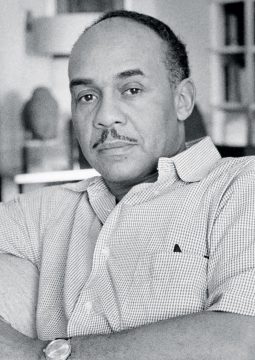Gene Seymour in Book Forum:
 ANY OPPORTUNITY TO READ A GREAT WRITER’S MAIL should be embraced in these days when a serial Instagram feed is about as ambitious as correspondence gets. Granted, at roughly a thousand pages, The Selected Letters of Ralph Ellison may be asking a lot, at the outset, of even the most committed scholar of twentieth-century American literature, to say nothing of the waves of readers who continue to come away from Invisible Man convinced that it’s the Great American Novel.
ANY OPPORTUNITY TO READ A GREAT WRITER’S MAIL should be embraced in these days when a serial Instagram feed is about as ambitious as correspondence gets. Granted, at roughly a thousand pages, The Selected Letters of Ralph Ellison may be asking a lot, at the outset, of even the most committed scholar of twentieth-century American literature, to say nothing of the waves of readers who continue to come away from Invisible Man convinced that it’s the Great American Novel.
But these letters, as assembled by John F. Callahan and Marc C. Conner, come to us a quarter of a century after Ellison’s death as more than just another corpus for further academic study. In heft and breadth, the missives here make up the Big Book of Life that Invisible Man’s triumph augured, and that we’ve been awaiting (not always patiently) for all these years. After his first book’s publication in 1952, Ellison doggedly, painstakingly, and at times dolefully toiled at completing a second novel, which remained unfinished at the author’s death in 1994. More than either posthumous version of that book, the densely compacted Juneteenth and forbiddingly gargantuan Three Days Before the Shooting . . . (both curated by Callahan, Ellison’s executor), Ellison’s letters vibrate with striking imagery, flinty repartee, shrewd literary insight, and bountiful reverie. One can’t help thinking while wandering through this capacious volume that if only this mercurial and meticulous man could have somehow sustained the high-spirited, polychromatic flow of his correspondence and carried it into his regular routine, there could have been two, three, even four more novels bearing his name. Or so you’d like to imagine.
The story told by this Ellison opus, as in Invisible Man, concerns a black American’s progress toward self-realization in a world that insists on misunderstanding him. Ellison was correct to insist, especially to interviewers in the immediate wake of its publication, that his novel was not autobiographical, although the author, like the book’s anonymous protagonist, rose from modest beginnings (in Oklahoma City) to attend a historically black university (Alabama’s Tuskegee Institute).
More here. (Note: Throughout February, at least one post will honor The Black History Month. This year’s theme is “African Americans and the Vote.” Readers are encouraged to send in their suggestions)
